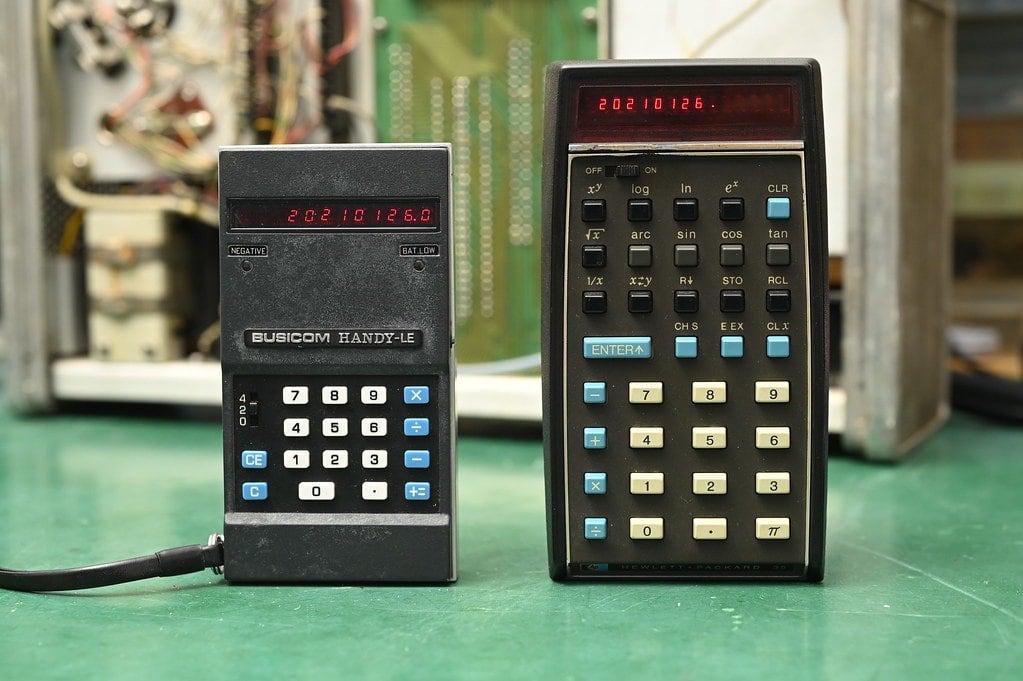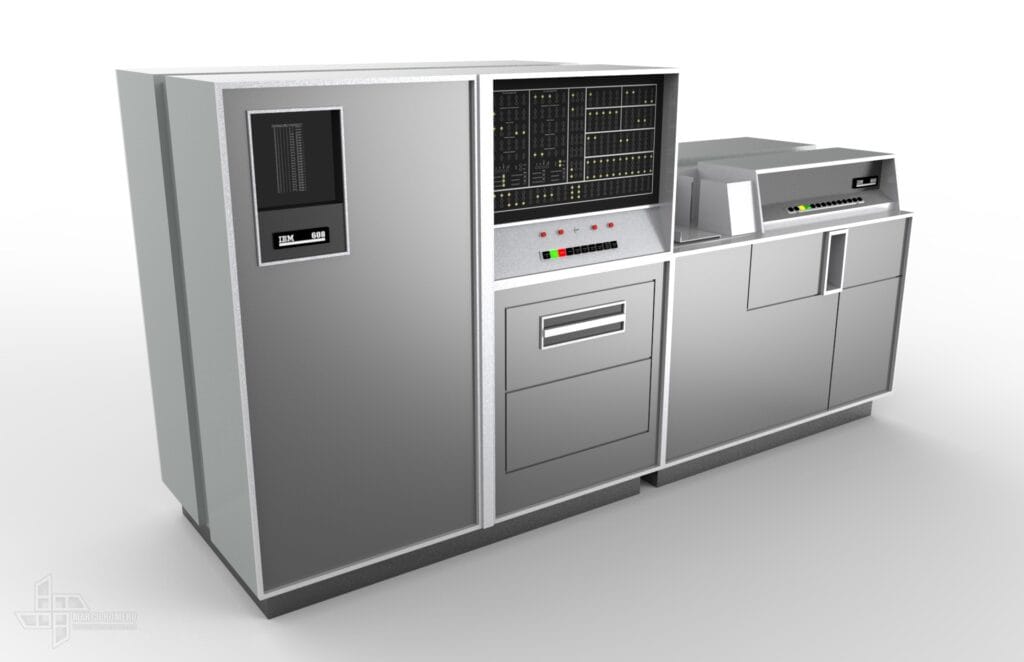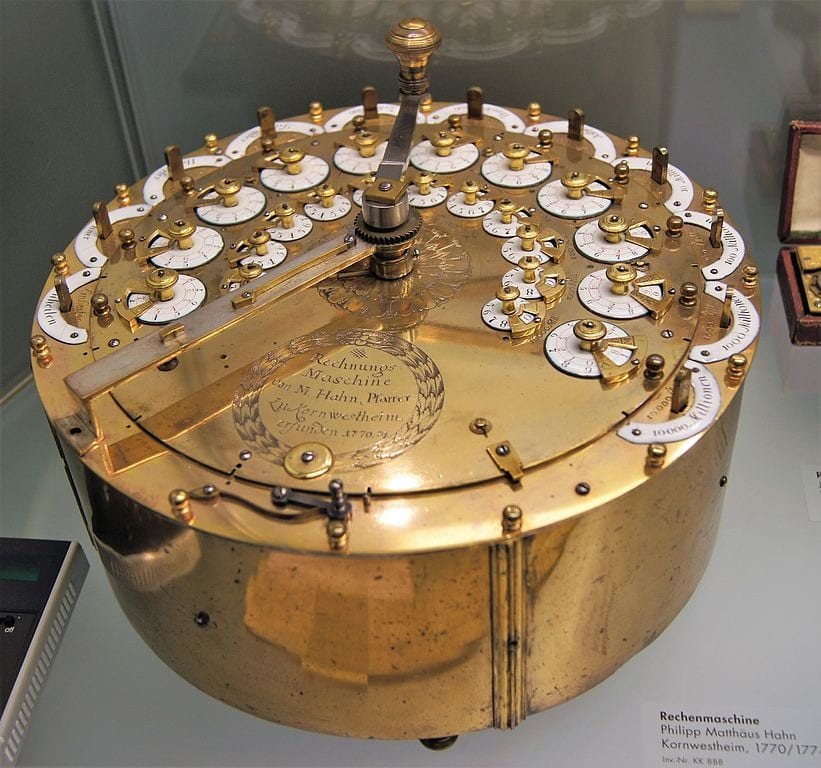Calculators have revolutionized the way we perform mathematical calculations and have become an integral part of our daily lives. From simple arithmetic to complex mathematical operations, calculators have made it possible for us to solve problems with ease and accuracy. However, few people know about the history of calculators and the earliest models that paved the way for the advanced calculators we use today.
In this article, we delve into the world of calculators and explore the 8 oldest calculators ever invented. From the earliest known abacus to the first electronic calculators, this article offers a fascinating look at the evolution of calculators and the innovative minds that brought them to life. Read on as we journey through the history of calculators and discover how these fascinating devices have changed the world forever.
8. HP-65
Year Invented: 1974
Inventor: Hewlett-Packard
Decimal Limit: 15-digit numbers

The HP-65 was a groundbreaking calculator invented by Hewlett-Packard in 1974. It was one of the first programmable calculators and allowed users to store and recall calculations, making it a powerful tool for engineers, scientists, and other professionals. The HP-65 had a decimal limit of 15 digits, which was significantly higher than other calculators of its time, providing users with greater accuracy and precision.
This calculator also had a magnetic card reader, which allowed users to store programs and recall them later, making it a truly innovative device. The HP-65 was compact, portable, and sleek, making it a popular choice among professionals. Its powerful features and ease of use made it a staple in the world of calculators and helped solidify Hewlett-Packard’s reputation as a leading technology company.
Did You Know?
The HP-65 was so popular that it was used by NASA during the Apollo missions to perform calculations related to navigation, guidance, and control.
7. Busicom LE-120A
Year Invented: 1971
Inventor: Busicom
Decimal Limit: 12-digit numbers

The Busicom LE-120A calculator was a significant milestone in the history of calculators. Invented by the Japanese company Busicom in 1971, it was one of the first calculators to feature microprocessor technology, which allowed it to perform complex calculations with greater accuracy and speed.
The LE-120A had a decimal limit of 12 digits, making it a powerful tool for professionals in various industries. One of the critical features of the Busicom LE-120A was its compact design and portability, making it a popular choice among engineers, scientists, and other professionals who needed to perform calculations on the go.
Additionally, the LE-120A was relatively affordable compared to other calculators of its time, making it accessible to a broader range of users. The Busicom LE-120A was a significant step forward in the evolution of calculators and paved the way for developing more advanced models.
Did You Know?
The Busicom LE-120A remains a highly sought-after collector’s item and is considered a classic among vintage calculator enthusiasts.
6. Cal Tech
Year Invented: 1967
Inventor: Texas Instruments
Decimal Limit: 6-digit numbers

The Cal Tech calculator, invented by Texas Instruments in 1967, was a significant milestone in the history of calculators. It was also one of the first programmable calculators designed for use in universities, research institutions, and other educational settings, where it was used for performing complex mathematical calculations. Like other early programmable calculators, it allowed users to store and recall measures, making it a valuable tool for students and researchers.
With a decimal limit of 6-digit numbers, the Cal Tech calculator was sufficient for most calculations at the time. Its compact design and portability made it a popular choice among students who needed to perform calculations outside the classroom. The Cal Tech calculator helped establish Texas Instruments as a leading technology company and remains an essential piece of technology history.
Did You Know?
Despite its small size, the Cal Tech calculator was highly regarded for its speed, accuracy, and ease of use.
5. ANITA MK-8
Year Invented: 1961
Inventor: Bell Punch
Decimal Limit: 12-digit numbers

The ANITA MK-8 calculator was invented by the British company Bell Punch in 1961 and was one of the first electronic desktop calculators. With a decimal limit of 12-digit numbers, the ANITA MK-8 could perform complex calculations with accuracy and speed. It was widely used in finance, engineering, and scientific applications and was considered a significant technological advance at the time.
The ANITA MK-8 was known for its durable construction and reliability, making it a popular choice among professionals who needed to perform calculations daily. Its user-friendly interface and intuitive design made it easy for users to perform calculations quickly and efficiently.
Did You Know?
The ANITA MK-8 used vacuum-tube technology, which was cutting-edge at the time and allowed faster and more accurate calculations.
4. IBM 608
Year Invented: 1954
Inventor: IBM
Decimal Limit: 40 nine-digit numbers

The IBM 608 was a revolutionary calculator invented by IBM in 1954. It was one of the first electronic calculators to be commercially produced and was a significant step forward in developing calculator technology. The IBM 608 was designed to perform complex calculations quickly and accurately, with a decimal limit of 40 nine-digit numbers.
It was highly versatile and could perform various mathematical operations, including addition, subtraction, multiplication, and division. It was widely used in multiple applications, from engineering and scientific research to financial calculations and data analysis. The IBM 608 was known for its reliability and durability, making it a popular choice among professionals who needed to perform calculations daily. Its user-friendly interface and intuitive design made it easy for users to perform calculations quickly and efficiently.
Did You Know?
The IBM 608 was also widely exported and used in countries around the world, making it a truly global product. Its popularity and widespread use helped establish IBM as a leading technology company and contributed to the growth of the calculator industry.
3. Arithmometer
Year Invented: 1820
Inventor: Charles Xavier Thomas De Colmar
Decimal Limit: 6-digit number

The Arithmometer was a mechanical calculator invented by Charles Xavier Thomas de Colmar in 1820. It was one of the earliest mechanical calculators and marked a major step forward in developing calculator technology. The Arithmometer was capable of performing addition, subtraction, multiplication, and division and had a decimal limit of 6-digit numbers.
The Arithmometer was highly reliable and was widely used in a variety of applications, including financial calculations and data analysis. Its mechanical design made it very durable, and many Arithmometers were still in use several decades after they were first invented.
Did You Know?
Charles Xavier Thomas de Colmar was a French inventor and engineer born in 1785 and is remembered as a pioneer in the field of calculators.
2. Cylindrical Calculator
Year Invented: 1773
Inventor: Philip Matthaus Hahn
Decimal Limit: 9-digit numbers

The Cylindrical Calculator, invented by Philip Matthaus Hahn in 1773, was one of the first calculators to be designed with a cylindrical form factor. This design made the calculator compact and portable, and it quickly became a popular tool among mathematicians and engineers.
The Cylindrical Calculator was capable of performing basic arithmetic operations, including addition, subtraction, multiplication, and division. It was equipped with a 9-digit display, which was considered to be highly advanced for its time.
Did You Know?
In addition to its practical applications, the Cylindrical Calculator was a highly prized decorative item. It was often displayed in homes and offices as a symbol of status and learning when it was invented.
1. Calculating Clock
Year Invented: 1623
Inventor: Wilhelm Schickard
Decimal Limit: 6-digit numbers

The Calculating Clock, invented by Wilhelm Schickard in 1623, is considered the oldest calculator in the world. It was a major breakthrough in calculator technology and marked a significant step forward in developing mechanical calculators. The Calculating Clock was designed to perform basic arithmetic operations, including addition, subtraction, multiplication, and division.
It was equipped with a 6-digit display and could perform complex calculations with relative ease. Today, the legacy of the Calculating Clock lives on as a symbol of the ingenuity and creativity of its inventor, Wilhelm Schickard, and as a testament to the progress made in the field of calculator technology over the centuries.
Did You Know?
Despite its advanced capabilities, the Calculating Clock was only used for a short period of time due to the limited number of devices that were manufactured.











